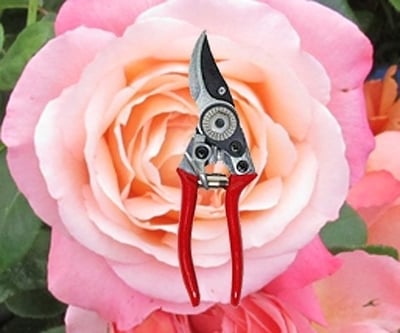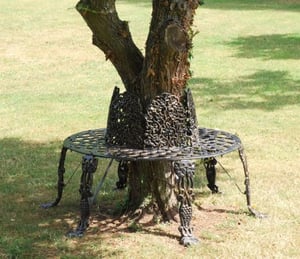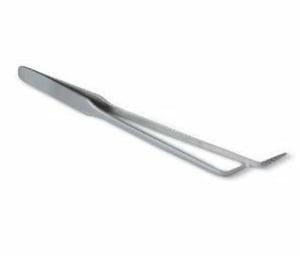Pruning Trees And Shrubs
As winter is generally the best time of the year to prune shrubs and trees, David Coton waits for the leaves to fall from the trees before getting out his clean sharp secateurs and loppers.

As winter is generally the best time of the year to prune shrubs and trees, David Coton waits for the leaves to fall from the trees before getting out his clean sharp secateurs and loppers.

Pruning leads to healthy new growth, encourages the formation of fruit or flower buds and re-shapes plants that look unbalanced or have been damaged by bad weather.
Techniques needed to prune different species of trees and shrubs are many and varied but you can bear in mind a few basic rules.
By pruning you are trying to encourage steady healthy regrowth, if you cut back too much the resultant growth surge may be too vigorous.
Annual pruning in normal circumstances should be minimal rather than brutal, always making a clean cut slanting away and just above a bud.
You may have to resort to hard pruning now and again in certain circumstances, and some shrubs can be rejuvenated in this way, but it's not commonly necessary.
Cut out any weak or dead shoots shoots that have started to overcrowd the centre of a tree or shrub, this allows air to circulate more easily and lets light in.
This is always best done during the dormant season so you should remember to put a tree pruning grease on all the major cuts to prevent frost damage to newly exposed wood. Pruning in season makes it more difficult to see the branch shape because of all the leaves but can still be carried out but it means you will probably sacrifice any fruit during the season but that may not be a major concern if the fruit is normally poor and damaged.
What you are looking for is to create a rose bowl shape with the tree branches or an upside down umbrella. Any branches that are going through the centre of this shape should be considered to be removed but you do need to maintain a little central growth. The idea is to get the fruit on the outside of the tree which makes maintenence and picking so much easier. It also allows for a clear passage of air.
Also remove any dead or weak branches and cut back any that are too tall.
Generally, pruning should take place when plants are in their winter dormancy, this leaves the maximum growing time for flowering shoots to be produced.
Deciding on when and how to prune becomes complicated when you have to balance maintaining the shape and decorative nature of perhaps a fruit tree with pruning that will maximise its crop.
To achieve this successfully you will need to know flowering and fruiting times. As an example, if a plant flowers or produces fruit on year old shoots, you clearly won't want to cut these out by annual pruning. So it's vital that you know the characteristics of the plant before you prune.
Cosmetic pruning may be limited to removing over vigorous shoots that have unbalanced a shrub's shape. Remember to cut back weak growth hard, and strong growth lightly.
Dead and damaged wood on trees should be removed for safety reasons and the possibility that they may be an entry point for infection.
Wood that is already diseased should be removed completely by cutting cleanly back to healthy growth. If you are removing an entire branch, cut back to close by the branch's collar.
Paintng the cut used to be popular but now the common consensus is that the wound will heal perfectly well by itself and painting may do more harm than good by interfering with a tree's natural healing process.
Finally it goes without saying that you should choose the correct type of secateurs, ergonomically designed to make the cleanest cut, or for larger branches loppers are essential.
Shop Now £224.99
Shop Now £124.99
Shop Now £274.99
Shop Now £109.99
Shop Now £99.99
Shop Now £534.99
Shop Now £24.99
Shop Now £7.29







